- 027 488 9042
- info@rommel.co.nz
- Forrest Hill, Auckland
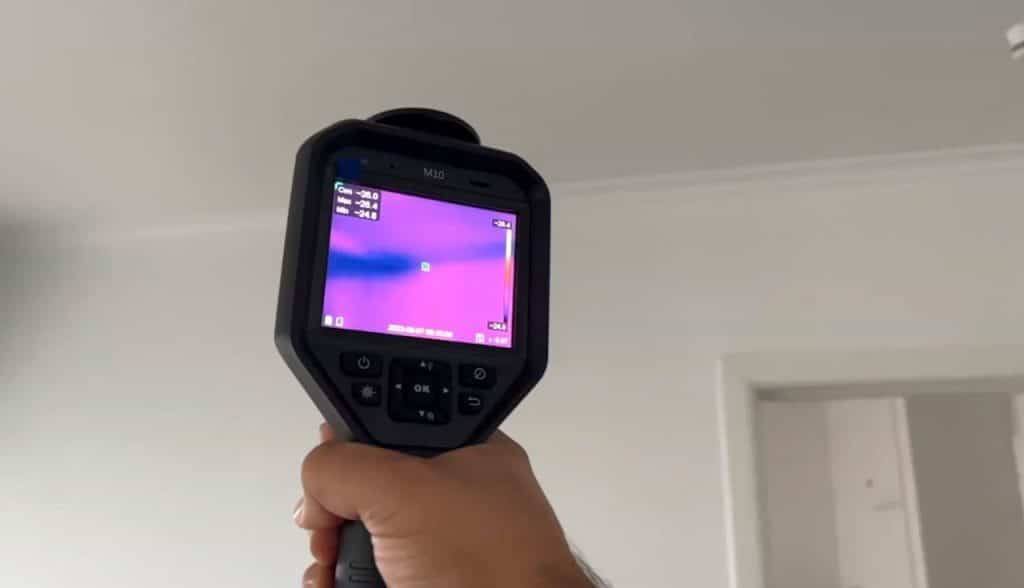
Thermal Inspection For Buildings
Thermal inspection, also known as thermal imaging, or infrared imaging is a non-invasive diagnostic technique that can be used to detect moisture or water leaks in buildings. It works by detecting temperature differences on the surface of building materials that may be caused by moisture or water intrusion.
Thermal imaging, involves using infrared cameras to detect and visualise temperature variations, offers numerous benefits when applied to the New Zealand built environment. From energy efficiency assessments to identifying structural issues, thermal inspection provides valuable insights that contribute to improved building performance, maintenance, and overall quality.
We use valuable equipment to ensure our customers with the highest level of safety and quality
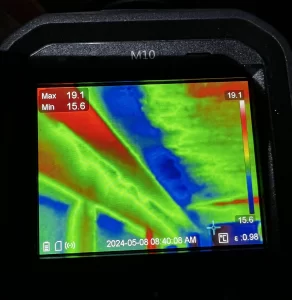
In addition to identifying leaks, thermal imaging can also be used to monitor the effectiveness of building envelope repairs or insulation upgrades. By comparing temperature patterns before and after repairs or upgrades, building owners can assess the effectiveness of the work and identify any remaining issues that need to be addressed. Thermal imaging is a valuable diagnostic tool for building owners and property managers who are looking to detect and address water leaks and moisture problems in a non-invasive and cost-effective manner.
thermal inspection is a versatile and valuable tool in the built environment, offering benefits ranging from energy efficiency improvements and early detection of issues to non-destructive testing and enhanced overall building quality. Its applications span various stages of a building’s lifecycle, from construction and maintenance to energy audits and quality assurance assessments.
There have been multiple studies undertaken on the use of infrared thermal inspection in a variety of fields. Rommel specialises in the New Zealand built environment, whether the inspection is for new builds for quality assurance, or existing buildings for owner / occupant peace of mind. The following are a summary of the benefits found in the built environment when using thermal inspection as a quality assurance tool.
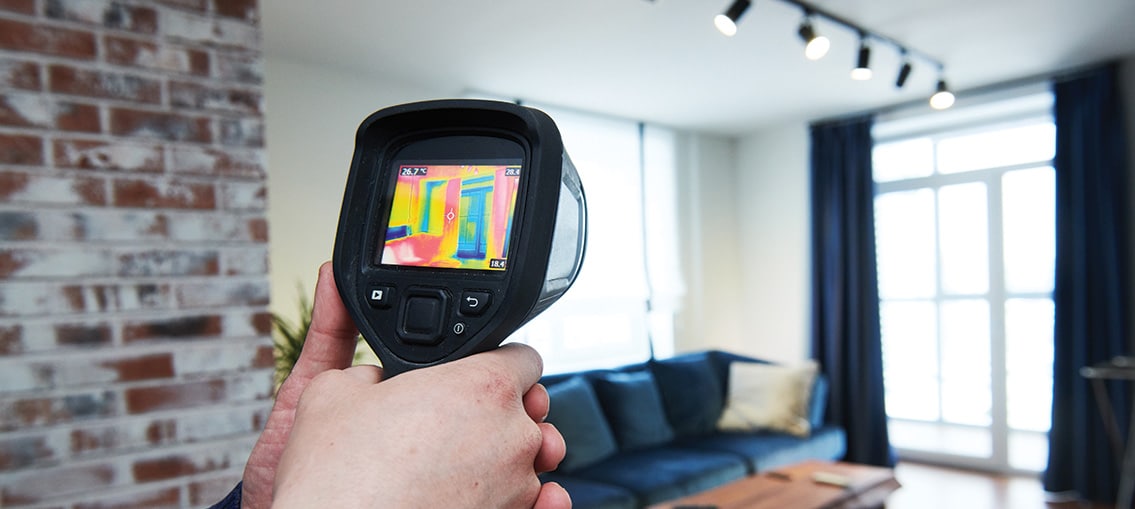
What Is The Benefits of Thermal Inspection?
thermal inspection or infrared imaging is a powerful and versatile tool that can be used for a wide range of applications
- Non-destructive
- Detection for Hidden Issues
- Cost beneficial
- Improved energy efficiency
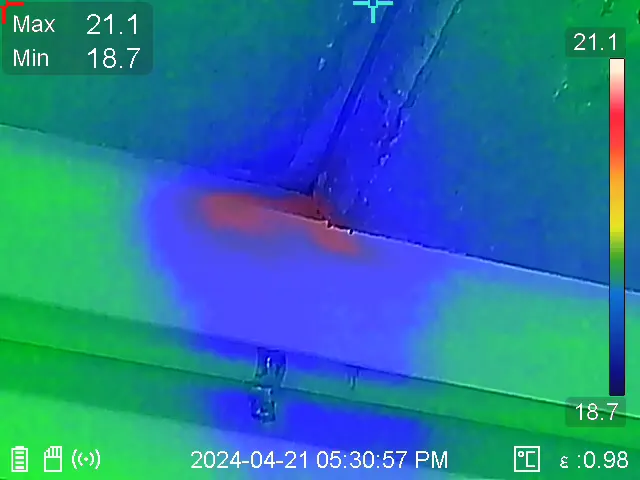
thermal inspection is a powerful tool for assessing the energy efficiency of buildings. It helps identify areas of heat loss or gain, insulation deficiencies, and air leaks. This information enables targeted energy efficiency improvements, reducing utility costs and environmental impact.
- Early Detection of Moisture Intrusion:
- thermal inspection can identify areas of moisture intrusion and water damage within building structures. By detecting temperature anomalies associated with wet or damp areas, thermal inspection allows for early intervention to prevent or mitigate potential water-related issues.
- Energy Efficiency Assessments:
- thermal inspection is a powerful tool for assessing the energy efficiency of buildings. It helps identify areas of heat loss or gain, insulation deficiencies, and air leaks. This information enables targeted energy efficiency improvements, reducing utility costs and environmental impact.
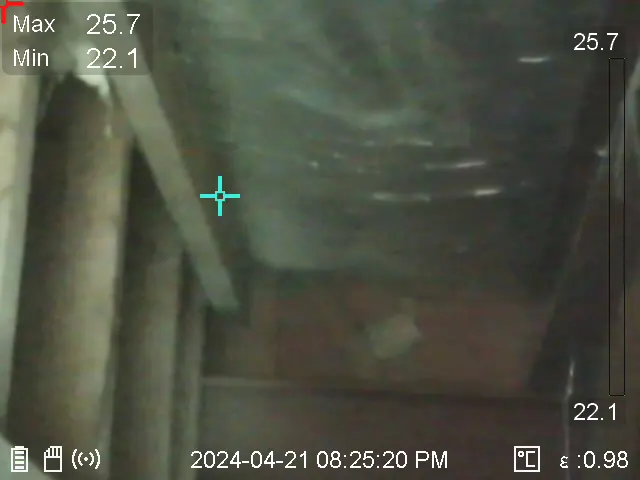
A broad range of applications for Thermal Inspection
Infrared cameras can be used in a wide range of applications, from building inspections and maintenance to medical diagnostics and surveillance. This makes them a versatile and valuable tool for a variety of industries.
- HVAC System Performance:
- thermal inspection is used to assess the performance of heating, ventilation, and air conditioning (HVAC) systems. It helps identify issues such as uneven heat distribution, clogs, and inefficiencies, facilitating maintenance and optimization of HVAC systems.
- Electrical System Inspections:
- thermal inspection is widely employed for inspecting electrical systems. It helps identify overheating components, loose connections, and potential faults, allowing for proactive maintenance and reducing the risk of electrical failures and fires.
- Roof Inspections:
- In roof inspections, thermal inspection is valuable for detecting areas with trapped moisture or leaks. This early detection enables timely repairs, prolonging the life of roofing materials and preventing structural damage.
- Quality Control in Construction:
- During construction, thermal inspection aids in quality control by verifying the proper installation of insulation, identifying thermal bridging issues, and ensuring that construction elements meet design specifications. It helps prevent issues before they become costly problems.
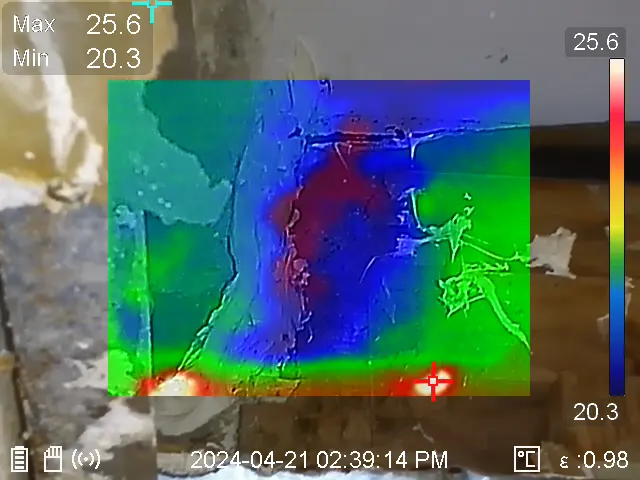
Increased safety
Infrared cameras can be used to detect potential safety hazards, such as electrical faults, overheating equipment, and gas leaks. By identifying these issues early on, preventative action can be taken, reducing the risk of accidents or injury.
- Quality Control in Construction:
-
- During construction, thermal inspection aids in quality control by verifying the proper installation of insulation, identifying thermal bridging issues, and ensuring that construction elements meet design specifications. It helps prevent issues before they become costly problems.
2. Identification of Structural Anomalies:
-
- thermal inspection can detect structural anomalies or defects that may be invisible to the naked eye. This includes identifying areas of heat loss in building components or abnormalities in construction materials, assisting in structural integrity assessments.
3. Improved Indoor Air Quality:
-
- By identifying areas prone to moisture accumulation, thermal inspection contributes to the prevention of mold growth and other indoor air quality issues. This is particularly important for maintaining a healthy and comfortable indoor environment.
contact us today
If you’re looking to ensure the safety, efficiency, and performance of your property, our thermal inspection services are here to help. Thermal imaging is a powerful tool for identifying hidden issues such as heat loss, insulation defects, moisture intrusion, and electrical faults within your building.
Don’t wait for minor problems to turn into costly repairs. Contact us today to schedule a professional thermal inspection. Our expert team is equipped with advanced technology to provide accurate assessments and tailored solutions, helping you protect your property and ensure its long-term durability. Reach out now to learn more!

18 Comments
Can you tell me more about this thermal inspection in simpler terms?
If there is a leak between two walls and you don’t know about it, using thermal imaging can help you see where the leak is located. and easily deal with it. Detecting temperature variations on the surface of building materials, which may be caused by moisture or water intrusion, is how it works.
Are there any disadvantages to this Inspection thermal?
There are no major disadvantages to thermal inspection.
after reading this got the idea to test my home with one of this thermal inspection devices
got to get one of these
such cool device but can’t you use an app on your cell phone to do the same thing
Yes you can run a thermography app on your phone, but it will not give you the result you’re looking for
How do you differentiate your thermal inspection services from competitors in New Zealand?
Our thermal inspection services stand out in New Zealand due to our use of cutting-edge technology and expert analysis. We use advanced infrared thermal cameras and other diagnostic tools, ensuring accurate detection of hidden moisture, energy loss, or structural defects. Unlike some competitors, we provide detailed, actionable reports with clear recommendations for remediation. Our team’s expertise in both residential and commercial sectors allows us to offer tailored solutions for each client’s unique needs, ensuring reliability and efficiency in identifying and addressing building issues.
Can thermal imaging detect structural weaknesses?
Thermal imaging primarily detects temperature variations, which can indicate issues like moisture intrusion, insulation gaps, and air leaks. While it does not directly identify structural weaknesses, it can highlight areas of concern, such as hidden water damage or thermal bridging, which may contribute to structural degradation over time. For a comprehensive structural assessment, thermal imaging is best used alongside other diagnostic methods like physical inspections and load testing. If you have specific concerns, we can tailor our approach to suit your building’s needs.
Can thermal cameras detect electrical faults?
Based on industry practices and available research, thermal cameras are indeed effective in detecting electrical faults. They work by capturing the infrared energy emitted from electrical components and wiring, which can reveal abnormal heat patterns. Overheating—often a sign of loose connections, overloading, or failing components—can be identified before it leads to failure or safety hazards. This makes thermal imaging a valuable tool in preventive maintenance and electrical inspections.
Is there any preparation needed before an inspection?
Yes, some preparation is recommended before an inspection to ensure accurate results. Depending on the type of inspection, you may need to clear access to certain areas, provide building plans, or temporarily turn off HVAC systems. For tests like door blower testing, all windows and doors should be closed, and for thermal inspections, conditions like sunlight exposure may be considered. We will provide specific instructions before your scheduled inspection to ensure a smooth process. Let us know if you have any questions!
Do you provide recommendations for fixing detected defects?
Yes, we provide detailed recommendations for fixing any defects detected during our investigations.